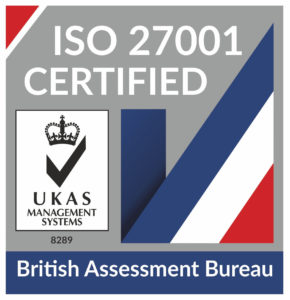
HaloITSM Guides
Documentation to assist with the setup and configuration of the HaloITSM platform
Contracts
Client contracts are used to track a specific agreement you have with a customer in regards to the service you provide them. For example, how much you charge the customer per period and what service level agreement (SLA) you work to on that customer's tickets.
Contract Settings
Head to Configuration > Contracts, in here you can designate:
- The contract charge description
- The relationships between assets and the associated contracts
- The 'Calculate Contract value using Assets' option allows you to set the value of the contract to the total value of assets on the contract. This can be helpful if your contract values vary from month to month, depending on the assets in use by the client.
- The 'Next Contract Reference' allows you to set the starting point for the auto-generated contract references (you'll see a 'Generate' button when adding a new contract). For example, this coudl be set to 'ABC 1' and the next reference would auto-generate as 'ABC 1', then 'ABC 2', etc.
- The expiry alarm period. Setting this above zero will trigger a contract expiry alarm to be sent to any agents that have a notification of event 'Contract Expiry Alarm', configured in the notifications configuration area.
- The PDF template for use with contracts. Check our PDF template guide for more information.
- You can also import for your clients or suppliers. Clicking either import button will open up the import screen.
Viewing/Editing a Client's Contracts
- Navigate to the Client/Customer area.
- Find the customer whose contracts you wish to view and click on their name.
- Click on the "Contracts" Tab.
- Here you will find a list of all the contracts against that client.
- Click into any one to view the details or click new to add a new one.
Editing/Creating a Contract
- Ensure the client is correct.
- Fill in the details on this first screen which adhere to your agreement with that customer.
- N.B. Hours per Period: This is the number of billable hours that are included in the contract for tickets with this contract assigned to them.
- SLA Setting: When this contract is applied to a ticket it will change the SLA to the one listed here. Leaving it empty ensures the usual system SLA rules apply.
- Billing tab - Set in here the cost to you and the charge to the customer per period.
- Set up the cost/charge and payment method.
- Add in the accounts code (this is relevant to your accounting structure, for example when using a billing integration).
- Adjust the invoicing options to your preference.
- Add any overriding charge rates.
- Click Save.
Adding Assets to a Contract
This may be necessary if the value of your contracts is tied to the assets linked to it.
- This is set in the contracts settings in configuration.
- Enter the contract you require.
- Navigate to the assets Tab.
- Click edit in the top left of the inner window.
- Click ⊕ on "Assets Included".
- Find the assets to add and select them.
- Click "Confirm Selection".
Periodic History
This tab shows the billing history for the contract. This includes data on every period billed, alongside the hours used and remaining for each period also.
Generating a contract PDF
At the top of a contract screen, you will see the button to Generate PDF. This allows you to print and distribute the contract in a document-friendly format. You can also use custom PDF templates when printing contracts. See our PDF template guide for more information.
Contract-Specific Tickets
Tickets can now be explicitly associated with client contracts. To do this, you can either select the contract on a ticket on a ticket-by ticket basis, or choose a default billing description that is used to select, in turn the default contract for each client.
Selecting a Contract at Ticket-Level
The contract field can be added to a ticket type, and works in the same way as any other ticket type field. This includes the use of attributes like whether it shows on the 'New Ticket' screen (for agents or end users), whether it's optional or mandatory, uses advanced field visibility, etc. The field will then show up as a drop-down that populates with the contract reference of every active contract for the ticket's client.
Setting a Default Contract
The below option under Configuration > Contracts which will allow a contract to be automatically selected when created a new ticket.
With this enabled, Halo will check to see if there are any valid contracts that exist under the ticket's client that use the default 'Billing Description'. If it finds one, this will be selected as the contract for the ticket.
To configure a default billing description, go to Configuration>Billing>Billing Descriptions and open up one of the descriptions and check-mark the below option.
This set-up avoids having to select the default contract for every client, if your billing descriptions are already configured on your contracts.
Popular Guides
- Asset Import - CSV/XLS/Spreadsheet Method
- Call Management in Halo
- Creating a New Application for API Connections
- Creating Agents and Editing Agent Details
- Departments and Teams
- Halo Integrator
- Importing Data
- Multiple New Portals with different branding for one customer [Hosted]
- NHServer Deprecation User Guide
- Organisation Basics
- Organising Teams of Agents
- Step-by-Step Configuration Walk Through



